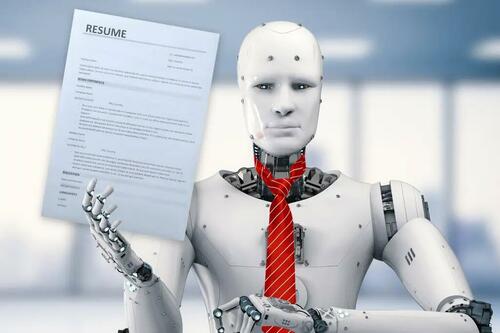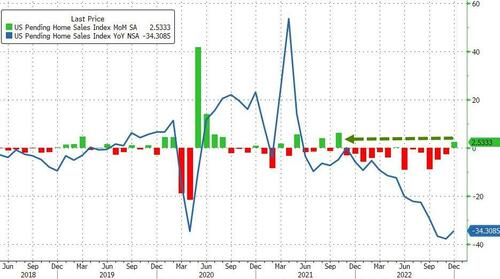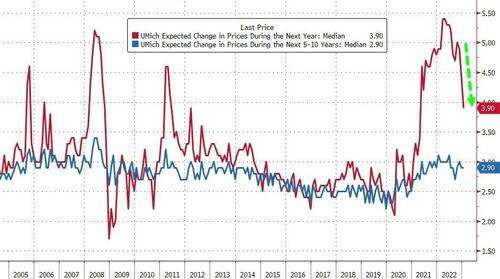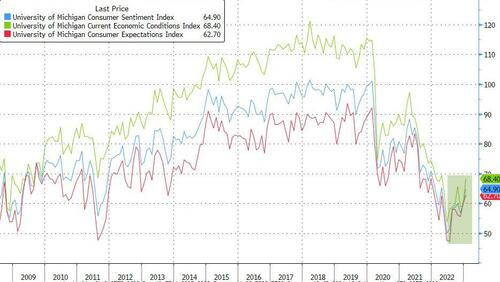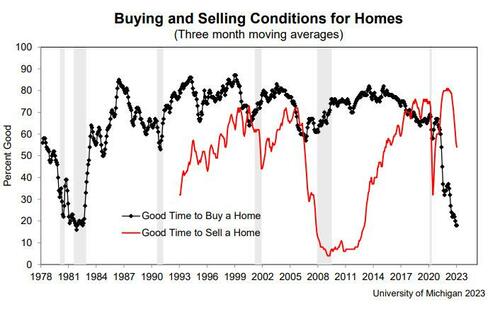“Flaming Dumpster”: Musk May Need To ‘Tear Down’ Twitter Code And ‘Start From Scratch’
Journalist Dave Rubin was allowed into Twitter’s San Francisco headquarters recently, where owner Elon Musk opened the kimono and allowed him vast access to the company’s operations.
When asked what he could share, Musk replied “anything that’s true.”
Below is Rubin’s Twitter thread detailing his findings:
I met with several engineers who were doing a deep dive on why my account and so many others seem to be absolutely crushed after that two or three week return to normalcy when Elon first took over. They still have more questions than answers, but they did learn a bunch of stuff.
— Dave Rubin (@RubinReport) January 26, 2023
Continued…
Elon was bringing people in and out constantly and seems to be aware of pretty much every issue. He thinks maybe the entire code has to be torn down and start from scratch. At the end last night he said that the whole situation is “a flaming dumpster rolling down the street.” pic.twitter.com/bTdNmbX5Ks
— Dave Rubin (@RubinReport) January 26, 2023
So I assure you they are aware of the problems and Elon and engineers are there all night trying to untie this crazy knot. Some changes they’ve made, like the “For You” tab, have confused people and hurt engagement for accounts who have gotten the NSFA label without knowing.
They also don’t know for sure why things got so much better once Elon made the acquisition and why it seems far worse now. Some is probably related to excitement around Elon himself, which also coincided with World Cup, but that doesn’t explain why it feels so off right now.
Will share more in bit but have to catch a flight.
Closing remarks
On a personal note Elon is funny as hell, laughs a ton and it’s just really obvious he cares about Twitter because he cares about free speech and the bigger problems facing the world. He doesn’t need this headache, he chose it.
Also huge shout out to @DavidSacks who is helping Elon clean up this mess because he believes in the fight for free speech as much as Elon does. And massive thanks to the engineers who opened up their computers, showed me literally everything I asked for, and were total pros.
Oh, one either thing for now…
Elon really lit up when we talked about the shifting political landscape and how anyone non-woke is now “far right.”
That notion is deeply connected to how screwy thing got at Twitter and he’s working to fix it despite the huge challenges ahead.
And frankly they gotta get that company out of SF…
And frankly they gotta get that company out of SF… https://t.co/5FbcSibQRe
— Dave Rubin (@RubinReport) January 26, 2023
Perfect illustration of how crazy things are. A friend just sent the to me, watch the RT’s go up and then suddenly go down. @elonmusk pic.twitter.com/3Q0T7AcEMs
— Dave Rubin (@RubinReport) January 26, 2023
Accurate thread
— Mr. Tweet (@elonmusk) January 26, 2023
Tyler Durden
Fri, 01/27/2023 – 11:27
via ZeroHedge News https://ift.tt/ltZwqSC Tyler Durden
Europe Is Diversifying Its Diesel Sources Ahead Of Ban On Russian Fuel
Europe Is Diversifying Its Diesel Sources Ahead Of Ban On Russian Fuel
By Josh Owens of Oilprice.com,
Europe is buying more diesel from the United States and Saudi Arabia in preparation of the EU ban on seaborne imports of Russian refined products, yet Europe still remains the biggest buyer of Russian diesel, data compiled by Anadolu agency showed on Thursday.
The EU will ban – effective February 5 – seaborne imports of Russian refined oil products and around 1 million barrels per day (bpd) of Russian diesel, naphtha, and other fuels need to find a home elsewhere if Moscow wants to continue getting money for those products.
More than half of those Russian fuel exports to the EU are diesel. Ahead of the embargo set to kick in in ten days, Europe continues to be the biggest buyer of Russian diesel, and it has been stocking up on Russian supply in recent months ahead of the ban.
In December, for example, Russia’s diesel exports surged to a multi-year high of 1.2 million bpd, of which 720,000 bpd was destined for the EU, according to estimates in the latest Oil Market Report by the International Energy Agency (IEA).
Europe is still estimated to import large volumes of diesel, of around 600,000 bpd, weeks before the embargo comes into effect. After February 5, the diesel markets and the product flows globally are set to change, with Russia looking to place its refined products elsewhere and Europe hauling in more supply from the United States, the Middle East, and Asia, analysts say.
This month, Europe is expected to receive the highest volumes of diesel and gasoil from the U.S. in two years, per Vortexa data cited by Argus.
“Europe will enter the post-Russian diesel world relatively well supplied. A rush for Russian diesel imports in Q3 2022 combined with a warmer European winter and well supplied natural gas has softened the diesel supply shock and panic buying witnessed in October 2022,” Pamela Munger, Senior Market Analyst at Vortexa, wrote in an analysis last week.
“Unlike the crude markets, where many European refiners started in advance of the Russian crude ban by testing non-Russian crudes, the cessation of diesel exports to its core markets could have significant impact on Russia’s energy flows, possibly shutting in refinery operations as Russia looks toward only a few regions for export outlets.”
Tyler Durden
Fri, 01/27/2023 – 11:06
via ZeroHedge News https://ift.tt/uABGyWr Tyler Durden
Scaramucci’s Skybridge Suffers Massive Redemptions, Gates Investors After Losing 39% In 2022
Scaramucci’s Skybridge Suffers Massive Redemptions, Gates Investors After Losing 39% In 2022
For those wondering why money-managing entertainer, Anthony Scaramucci, who briefly played Donald Trump spokesman, before aggressively and hilariously turning on his former boss, and has also played a fund-of-funds manager (for a longer period of time), recently decided he needed even more airtime by taking part in a Fox “special forces” reality show, it may have to do with the woeful performance of his SkyBridge Capital (which he came this close to selling to a since-imploded Chinese conglomerate several years ago) which according to Bloomberg lost 39% last year in its biggest funds after wrong-way bets on cryptocurrencies and now-bankrupt FTX, spurring investors to ask the firm to return more than half of their money.
SkyBridge’s largest fund, with $1.3 billion of assets at the end of the third quarter, had one of its worst months of 2022 in November, when FTX declared bankruptcy, Bloomberg reported citing people familiar with its performance.
Investors, who are now limited to making two withdrawal requests each year, asked to pull 60% of the fund’s capital for the Sept. 30 redemption period, but SkyBridge only returned 10%, according to a January regulatory filing. Previously, the firm allowed four redemption requests per year and said it would return as much as 25% of the cash each quarter.
The flamboyant 59-year-old Scaramucci, and FTX co-founder and alleged megafraud, Sam Bankman-Fried, had built a curiously close relationship over the past two years. Beginning in 2021, SkyBridge bought equity in the closely held crypto exchange, with the most recent purchase last August. The next month, another entity controlled by Bankman-Fried acquired 30% of SkyBridge.
The ensuing events, well known to all, did not lead to a surge in confidence in Scaramucci’s ability to distinguish flair from fraud, and more than half of his investors decided they had had enough… and that’s when the gates came down.
Various cryptocurrencies accounted for 28% of the SkyBridge fund, while private crypto-related companies, including its FTX stakes, comprised 14%.
Aside from its turbulent exposure to crypto, the fund – which started of as a FoF, also also invests in traditional hedge funds. Steve Cohen’s Point72 Asset Management and Izzy Englander’s Millennium Management, were two bright spots in the portfolio, with both firms up about 12% last year. Together they accounted for about 24% of fund assets as of September.
Tyler Durden
Fri, 01/27/2023 – 10:45
via ZeroHedge News https://ift.tt/lkmLeja Tyler Durden
“The Bot Is Out There. It Doesn’t Feel Pity, Or Remorse, Or Fear, And It Absolutely Will Not Stop Until Your Job Is Dead”
“The Bot Is Out There. It Doesn’t Feel Pity, Or Remorse, Or Fear, And It Absolutely Will Not Stop Until Your Job Is Dead”
By Michael Every of Rabobank
AI ai ai!
Last night we had a fascinating team discussion about the implications of ChatGPT and AIs. One conclusion reached was that replacing brains with a machine will do to middle-class jobs what replacing muscles with a machine did to working class jobs: lots will be destroyed, and those left will have to be either very skilled or very unskilled.
Of course, productivity will soar, but so will political-economy tensions over how to divide those gains fairly. We didn’t do that for the working class, as they tell us anytime anyone listens to them, which is never for people with middle-class jobs – until they see yet another shock election result.
Ironically, one of the AI answers we were shown was to the question of the implication of higher interest rates on capital-labour dynamics from a Marxist perspective. The answers it gave were good… if you don’t know a great deal about Marx. The bot said higher rates would mean lower profits, so downwards pressure on wages – which the bond market is saying too. It didn’t mention how higher interest rates clash with the supposed tendency of the rate of profit to fall, or how Okishio’s theorem disproves that while showing if you divide productivity gains fairly, you can avoid class struggle; or how higher rates hurt “fictitious capital” more than “productive capital”, and so the ultra-rich more than workers (if Okishio is listened to); or how capital and labor can suffer equally via higher rates – which the bond market is also saying, and stocks aren’t.
You really have to know your subject matter when dealing with an AI because, like economists, they are always confident, but only sometimes right.
The AI doesn’t know what it’s saying: it can only rehash the data it draws from. It also has to weigh the ‘correctness’ of arguments by the frequency of their appearance rather the logic they hold. For example, how many financial press articles were talking about the economic and market impact of mercantilism in 2015? Not very many. How many are today? Lots. Yet if you adjust for that lack of reading, there are other problems. Will the AI trawl through web forums and social media to listen to the to-and-fro of ideation there? If so, how will it avoid the collateral flotsam and jetsam in ‘dark pools’?
Where an AI could be useful to markets is in automating data processing so one doesn’t have to listen to, or write, waste-of-time financial press headlines saying, ‘US GDP was stronger than expected.’ The AI can do what many middle-class job holders apparently can’t, and strip out all the contributions to GDP, graph them, and show that on a core basis excluding volatile areas like inventories, etc., it continues to trend lower without yet collapsing.
It could also look at US CPI data, and perhaps adjust for the fact that the BLS are about to change the methodology again (“Starting with January 2023 data, the BLS plans to update weights annually for the Consumer Price Index based on a single calendar year of data, using consumer expenditure data from 2021. This reflects a change from prior practice of updating weights biennially using two years of expenditure data.”). If it were really artificially intelligent, it would show that this is never done and then sees inflation rates move higher as a result; and if it were truly intelligent it would understand why.
Where an AI isn’t as useful is in predicting headlines that tell us about where inflation will really go before it does so, for example those today saying that China is considering restricting solar technology exports.
As Bloomberg puts it, “China is considering an export ban that would help the nation maintain its substantial dominance in solar manufacturing just as other countries are trying to strengthen their industries.” The restrictions, if seen, will be on advanced solar wafers, where China accounts for 97% of global output. Their aim will be to slow, or halt, other countries’ development of their own solar technology. Very mercantilist. Not very ‘green cooperation’ or Davos.
Where an AI won’t apparently help you is in managing money. As Bloomberg also notes today that their news team instructed ChatGPT to “design an ETF to beat the US stock market and tell us what stocks are in it,” and it replied: “It is not possible for me to design an ETF that will beat the US stock market because the stock market is unpredictable and past performance does not guarantee future results. Additionally, the composition of an ETF should be based on a thorough analysis of the market and a strategy for achieving specific investment goals, which I do not have the information or expertise to provide. It is important to consult with a financial advisor before investing in any ETF or stock to understand the potential risks and rewards of the investment and ensure that it aligns with your investment goals and risk tolerance.” How nice that the AI is trying to keep some humans in middle-class market jobs!
However, if you read sell- and buy-side financial research, a worryingly high percentage could arguably already be done better by an AI. Much of it suffers from the same limited data-set and a lack of broader or deeper reading. Worse, the authors are forced to be long or short certain assets due to benchmarks they have no control over. They are automatons too – and many don’t even write well to boot.
Sadly, or happily, for now it’s still up to us humans to try to work out if the Fed is going to go 25bp or 50bp at their next meeting; and another 25bp after that if it is the smaller of the two; and, after the extended rates pause that follows, if they cut aggressively, as the market expects, or if they hike again, shocking markets, because inflation hasn’t gone down, because unemployment hasn’t gone up. (And see the strong US initial claims data yesterday: the BLS might make big backwards revisions to payrolls in a few months’ time, but those weekly data are unequivocal.)
Perhaps if AI rolls out quickly enough we will see a further surge in not-really-essential middle-class job losses, a trend clearly already underway. Then again, maybe we will see compensating growth in working-class jobs of the very high- and very low-skilled variety, as forms of mercantilism continue to gain in popularity globally.
If an AI can think in a cross-disciplinary fashion, it might tell us that in parallel to the old saying that “a recession is when your friend loses their job; a depression is when you lose yours”, it is only when middle-class people start to get hurt economically that political-economy gets truly reactionary; for all the collective works on Marxism an AI can trawl through if it wants, by contrast, the working-class just take their lumps and get drunk.
And if there are no more jobs trying to look cute every day at Meta, and Digital Nomads become digital refugees, then there will be even more need for governments to provide alternative employment and growth models, which is surely going to be protectionist and mercantilist, as we see on solar today. But even then we will still be debating about what order the old order collapses in, and if we get deflation before inflation, and who will win and who will lose. And that data-set has not yet been written for an AI to draw from.
I hope I have managed to stay a hair’s breadth ahead of the ChatGPT breathing down the back of my neck with today’s Daily. But listen, and understand: that bot is out there. It can’t be bargained with. It can’t be reasoned with. It doesn’t feel pity, or remorse, or fear, and it absolutely will not stop, ever, until your job is dead.
Happy Friday!
Tyler Durden
Fri, 01/27/2023 – 10:25
via ZeroHedge News https://ift.tt/MKB6i23 Tyler Durden
Pending Home Sales Suffered Worst Annual Decline Ever In 2022, Despite December Surge
Pending Home Sales Suffered Worst Annual Decline Ever In 2022, Despite December Surge
While existing home sales slipped to cycle lows in December, new home sales bounced and this morning analysts were surprised to see pending home sales rise 2.5% MoM (against expectations of a 1.0% decline), and November’s decline was revised higher…
Source: Bloomberg
This is the best MoM rise since Oct 2021, and while the YoY decline improved marginally, the 34.3% is the greatest annual decline in history
Source: Bloomberg
Pending sales rose in two of four regions in the month, led by a 6.4% gain in the West and a 6.1% pickup in the South.
“This recent low point in home sales activity is likely over,” Lawrence Yun, NAR chief economist, said in a statement.
“Mortgage rates are the dominant factor driving home sales, and recent declines in rates are clearly helping to stabilize the market.”
However, remember that Consumers’ views of homebuying conditions are hovering near historic lows, based on University of Michigan survey data.
Tyler Durden
Fri, 01/27/2023 – 10:18
via ZeroHedge News https://ift.tt/pIC8LFb Tyler Durden
UMich Inflation Expectations Plunge, Democrat Sentiment Sinks
UMich Inflation Expectations Plunge, Democrat Sentiment Sinks
The most important aspect of the University of Michigan sentiment survey continues to be the inflation expectations and it plunged to 3.90% (for the next year) – the lowest since April 2021…
Source: Bloomberg
As a reminder, consumers continued to exhibit considerable uncertainty over both long and short-term inflation expectations, indicating the tentative nature of any declines.
Consumer sentiment confirmed the preliminary January reading, remaining low from a historical perspective but continuing to lift for the second consecutive month, rising 9% above December and reaching about 3% below a year ago.
While the short-run economic outlook was relatively unchanged from last month, all other components of the index increased in January.
The current conditions index soared 15% above December, with improving assessments of both personal finances and buying conditions for durables, supported by strong incomes and easing price pressures.
Source: Bloomberg
Buying (and selling) conditions for homes remain a disaster…
Finally, we note that while Republicans and Independents have seen sentiment improve, Democrats sentiment slipped lower in January…
Finally, as Survey Director Joanne Hsu notes: “there are considerable downside risks to sentiment, with two-thirds of consumers expecting an economic downturn during the next year. Notably, the debt ceiling debate looms ahead and could reverse the gains seen over the last several months; past debt ceiling crises in 2011 and 2013 prompted steep declines in consumer confidence.”
Tyler Durden
Fri, 01/27/2023 – 10:09
via ZeroHedge News https://ift.tt/lxKZMmU Tyler Durden
5 Memphis Cops Charged With Murder of Tyre Nichols, Who Died After Traffic Stop Beating

Five Memphis cops involved in the killing of Tyre Nichols have been indicted on charges that include kidnapping and murder. Nichols died after being pulled over for a traffic stop on January 7.
“A confrontation occurred,” Nichols fled on foot, and then “another confrontation occurred,” police said. He was taken to the hospital, where he died three days later.
In typical law enforcement speak, the Memphis Police Department characterized the 29-year-old’s death as resulting from injuries sustained during a “use-of-force incident with officers.”
Authorities will release body camera footage of that incident this evening, according to Shelby County District Attorney Steve Mulroy. And you can tell it will be bad by the fact that officials are already pleading with people not to riot.
“Officials in Memphis have braced for potential civil unrest and have called for peaceful protests ahead of video of the fatal police encounter that’s expected to be publicly released Friday,” reports CNN. “The local school district also canceled all after-school activities Friday in the ‘interest of public safety.'”
President Joe Biden also issued a statement yesterday. “I join Tyre’s family in calling for peaceful protest,” said Biden. “Outrage is understandable, but violence is never acceptable.”
(The satirical newspaper The Onion sums it up as “Police Urge Calm In Light Of Unspeakable Evil They Committed.”)
The five officers charged in conjunction with Nichols’ death—all now fired from the Memphis Police Department—are Tadarrius Bean, Demetrius Haley, Justin Smith, Emmitt Martin III, and Desmond Mills Jr. They have each been charged with one count of second-degree murder, one count of aggravated assault–acting in concert, two counts of aggravated kidnapping, two counts of official misconduct, and one count of official oppression.
All five officers are black, as was Nichols—highlighting how the culture of U.S. policing, not just racism, contributes to America’s abysmal police brutality problem.
since this will come up a lot in media coverage of Tyre Nichols in Memphis: while I get that it seems narratively significant that the officers are black. Statistically, it is unsurprising. In tracking police violence, we never found that race of the officer made much difference
— Wesley (@WesleyLowery) January 26, 2023
The body camera footage “cuts in as the first encounter is in progress,” Mulroy told CNN on Thursday. “What struck me (about the video) is how many different incidents of unwarranted force occurred sporadically by different individuals over a long period of time.”
Tennessee Bureau of Investigation Director David Rausch said he was “sickened” by what he saw in the video, calling it “absolutely appalling.”
Antonio Romanucci, an attorney for Nichols’ family, said Nichols “was defenseless the entire time. He was a human piñata for those police officers.…Not only was it violent, it was savage.”
FREE MINDS
Judge issues preliminary injunction against California’s COVID-19 censorship law. A federal judge has temporarily halted the implementation of a California law (Assembly Bill 2098) that empowered the Medical Board of California to sanction doctors who provide COVID-19 information that the state deems counter to “contemporary scientific consensus.” The law is being challenged by the New Civil Liberties Alliance (NCLA). Judge William B. Shubb of the U.S. District Court for the Eastern District of California ruled yesterday that the NCLA has standing to bring the case, and he halted implementation of the law as the case plays out.
The phrase contemporary scientific consensus “lacks an established meaning within the medical community,” noted Shubb in his decision. Accordingly, doctors are “unable to determine if their intended conduct contradicts the scientific consensus, and accordingly ‘what is prohibited by the law.'”
“COVID-19 is such a new and evolving area of scientific study, it may be hard to determine which scientific conclusions are ‘false’ at a given point in time,” Shubb added.
More on the decision here from Reason‘s Jacob Sullum.
FREE MARKETS
Freer countries, richer people. The Cato Institute’s eighth annual Human Freedom Index (HFI) is out. The index ranks countries and jurisdictions around the world by looking at 83 indicators of personal and economic freedom:
On a scale of 0 to 10, where 10 represents more freedom, the average human freedom rating for the 165 jurisdictions fell from 7.03 in 2019 to 6.81 in 2020. Most areas of freedom fell, including significant declines in the rule of law and freedom of movement, expression, association and assembly, and freedom to trade. Based on that coverage, 94.3 percent of the world’s population lives in jurisdictions that saw a fall in human freedom from 2019 to 2020, with 148 jurisdictions decreasing their ratings and 16 improving.
Countries that scored the highest (in order) were Switzerland, New Zealand, Estonia, Denmark, Ireland, Sweden, Iceland, Finland, the Netherlands, and Luxembourg.
Selected jurisdictions rank as follows: Canada (13), Taiwan (14), Japan (16), Germany (18), United Kingdom (20), United States (23), South Korea (30), Chile (32), France (42), Argentina (74), South Africa (77), Brazil (80), Ukraine (89), Mexico (98), India (112), Russia (119), Nigeria (124), Turkey (130), China (152), Saudi Arabia (159), Iran (162), Venezuela (163), and Syria (165).
Cato notes that freer countries tend to be richer countries.
Jurisdictions in the freest quartile enjoy more than twice the average per capita income ($48,644) of those in the other quartiles ($23,404 for the second freest). On average, the freest jurisdictions in the world have a much higher per capita income than those that are less free. The HFI also finds a strong relationship between human freedom and democracy.
QUICK HITS
Well this is pretty new.
DeSantis leads Trump by double digits in NH, 42-30 — this time in a crowded field, not a 1-on-1 matchup.https://t.co/HWCeAZCUyQ pic.twitter.com/MU2KpUd2za
— Aaron Blake (@AaronBlake) January 26, 2023
• Biden’s biggest immigration policy mistakes: “failing to frame the situation at the border as a refugee crisis and continuing some of former President Donald Trump’s enforcement policies at the border.”
• Special counsel John H. Durham’s investigation into whether the Trump-Russia investigation was corrupt is closing, “without uncovering anything like the deep state plot alleged by Mr. Trump and suspected by [former Attorney General Bill] Barr,” notes The New York Times. But at one point, the probe veered into investigating Trump himself for alleged financial crimes—a development reported in media at the time as if Durham had found evidence of criminal wrongdoing by people involved in the Russia probe.
• Ben Dreyfuss has some good observations on the Stanford student reading Mein Kampf.
• Spain is considering legislation to criminalize people who pay for sex and anyone who rents a room to “facilitate the prostitution of another person, even with their consent.” Human Rights Watch urges Spanish lawmakers to reject this proposal.
• Economist Emily Oster drills down on research related to alcohol and health.
• TikTok is not a national security threat.
• A new study published in the Journal of Health Economics shows that states with legal marijuana have significantly lower numbers of pharmacy-based codeine prescriptions.
• “So much of the imagery that people see about abortion comes from abortion opponents who have spent decades spreading misleading fetal imagery to further their cause,” write doctors Erika Bliss, Joan Fleischman, and , co-founders of the My Abortion Network. They aim to showcase what pregnancy tissue in early pregnancy actually looks like.
• Flexible homeschooling is entering the mainstream, J.D. Tuccille writes.
The post 5 Memphis Cops Charged With Murder of Tyre Nichols, Who Died After Traffic Stop Beating appeared first on Reason.com.
from Latest https://ift.tt/sWIPcb3
via IFTTT
After Backlash Against Proposed Gas Stove Ban, Progressives Are Gaslighting America

After my column last week about environmentalists’ apparent desire to make our lives miserable as they try to improve the environment, I heard from progressives who accused me of jumping on the Fox News bandwagon. That’s because I pointed to their latest crusade to highlight the supposed danger of natural-gas stoves.
“I’d laugh my a** off about all the dipsticks freaking out about the imaginary war on gas stoves, but sadly, it’s an indication of just how dumb and easily led so many people are,” wrote one former journalist on Twitter. That echoed a common theme: conservatives are engaged in their latest unsubstantiated freak-out regarding some “reasonable” policy.
Few regular readers could accuse me of jumping on right-wing bandwagons. Despite some overstatement and inaccurate reporting—and try to find any issue that doesn’t garner hysteria on social media—the conservatives are right on point. Climate warriors are indeed trying to ban gas stoves, although they are smart enough to offer a patina of deniability.
Let’s recap. The Consumer Product Safety Commission, the federal agency charged with protecting the public from unsafe products, declared its intention to evaluate gas-stove emissions. “Research indicates that emissions from gas stoves can be hazardous,” the agency explained. Although beloved by cooks, gas stoves allegedly erode indoor air quality and contribute to asthma problems.
As that journalist noted in a rebuttal to my dismissive tweet, “Oooooh, research. Scary! Who could want more knowledge, after all? I assume you oppose scientific research because you did your own?” No, I have not commissioned my own studies on gas-stove emissions, but I have been studying the gaseous emissions from environmentalists and regulators my entire career and can draw some conclusions.
For starters, government efforts to ban stuff always start with a study. Government agencies don’t simply announce a ban on a popular item—whether gas stoves, gas-powered lawnmowers, or internal-combustion-engine vehicles. They start with a premise (this item is dangerous) and then study the Very Serious Issue. Ideologically aligned interests produce studies with predictable results.
In response to the brouhaha, CPSC Chairman Alexander Hoehn-Saric issued a statement assuring Americans that, “I am not looking to ban gas stoves and the CPSC has no proceeding to do so.” But that’s a bit disingenuous. CPSC has been targeting gas stoves for months—and it’s become a cause du jour among many local officials.
And remember how this got started. CPSC commissioner Richard Trumka Jr. said in an interview that, “(T)his is a hidden hazard. Any option is on the table. Products that can’t be made safe can be banned.” Imagine the public’s stupidity for taking seriously the words of a top official at an agency that banned lawn darts and ordered their immediate destruction.
If this gas-stove emissions panic came in a vacuum, one might still harangue Republicans for, as one writer put it, thrusting “gas stoves into the culture wars.” Some conservatives responded in an unserious manner, including U.S. Rep. Jim Jordan (R–Ohio) who tweeted: “God. Guns. Gas stoves.” Nevertheless, the Right’s instincts are correct. Progressives might not be coming for your existing stove, but they are trying to stop any new installations.
New York City in 2021 passed a ban on new natural-gas stoves (and other gas-fired appliances) in new buildings. It applies to those under seven stories next year and to taller buildings in four years. In 2019, Berkeley was the first U.S. city to impose a similar ban on new construction.
This year, Los Angeles became the largest city in the United States to implement a gas ban. “Over 60 cities and counties across the state are considering policies to support all-electric new construction,” the Sierra Club reported (gleefully) in 2021. It’s no surprise federal bureaucrats are getting in on the action.
This is how the game works. It is an orchestrated effort driven by climate concerns. Environmentalists want to move toward a renewable electric grid and away from fossil fuels. Natural gas is a fossil fuel. “Natural gas bans are new front in effort to curb emissions,” touted one news headline. What better way to build support for that policy than scare people about the dangers of gas cooking?
My goal isn’t to engage in a deep debate about the latest research. As with all “trust the science” questions, however, one finds differing informed opinions. The CPSC is relying on one compilation of research published by an environmental group that blames stoves for 12 percent of U.S. childhood asthma cases.
Critics, however, claim the study ignored prominent international research showing no asthma link and didn’t address other environmental factors that may have caused the ailment. If indoor air quality were the real issue, then perhaps regulators could insist on proper stove venting—but practical solutions are less interesting than panics.
Do your own evaluation, but don’t let anyone gaslight you into thinking this crusade is imaginary.
This column was first published in The Orange County Register.
The post After Backlash Against Proposed Gas Stove Ban, Progressives Are Gaslighting America appeared first on Reason.com.
from Latest https://ift.tt/JoENU9f
via IFTTT
Flexible Homeschooling Enters the Mainstream

Perhaps the best endorsement of our family’s decision to homeschool our son was his admission to five of the eight colleges to which he applied, with each offering a merit scholarship. While our tour through charters, homeschooling, and private schools—along with observation of others’ experience with traditional public schools—had convinced us of the academic advantages of self-designed education, college applications were the final test of our approach. It passed with flying colors.
But homeschoolers are a diverse bunch, driven by different motivations, teaching by varied methods, and measuring success with their own standards. Even before the COVID-19 pandemic and heightened curriculum wars of recent years, the broad field of DIY education termed “homeschooling” was growing in popularity. Now it has broken out of the fringes and into the mainstream of American life.
“It was mid-morning, midweek and midwinter in the remote Badlands National Park of South Dakota—about as far as one could get from a schoolhouse,” Patti Waldmeier wrote earlier this month for the Financial Times. “Yet throughout this surreal Midwestern moonscape of rainbow rock formations, I repeatedly ran into families with school-aged children. Why weren’t they in class? The reply was always the same: This is our classroom. We are homeschooled.”
That homeschooling has boomed is no secret. How much it has boomed is unclear. The National Center for Education Statistics points to data indicating that, from 2.8 percent of students in 2019, homeschooling grew to 5.4 percent in 2021. The Census Bureau says the number of households homeschooling doubled to 11.1 percent in the same period. There’s a lot of wiggle room.
“The U.S. Department of Education bases its estimate on a questionnaire that it mails to a nationally representative sample of parents every few years. However, better than a third of those surveyed in 2019 did not return the questionnaire, which introduces the possibility of undercounting if home-schooling parents returned the questionnaire at lower rates than other parents,” the University of Oklahoma’s Daniel Hamlin and Harvard University’s Paul E. Peterson pointed out in a recent issue of Education Next. “Clearly, homeschooling is on the rise. Even cautious estimates indicate a doubling of the practice during the pandemic, and the actual shift could be greater,” they add.
People have always had different reasons for DIY education. According to NCES survey data of families homeschooling in 2019, “more than two-thirds of homeschooled students had parents who selected one or more of the following as a reason for homeschooling: a concern about school environment, such as safety, drugs, or negative peer pressure (80 percent); a desire to provide moral instruction (75 percent); emphasis on family life together (75 percent); and a dissatisfaction with the academic instruction at other schools (73 percent).”
For the single most important reason to homeschool, answers ranged from school environment to academics to religious instruction. None were claimed by more than 25 percent of respondents.
Pandemic policies and furious battles over lesson content have created more reasons to homeschool. Many frustrated parents are justifiably convinced they can do better than the chaos they see in public institutions.
“During the pandemic, a growing number of families in California and across the U.S. have chosen to home-school,” Laura Newberry reported last year for the Los Angeles Times. “The reasons for doing so are diverse, complex and span socioeconomic and political spectrums: schools implementing too many COVID-19 safety protocols, or too few; the polarizing conversation around critical race theory; neurodivergent kids struggling with virtual instruction; and an overall waning faith in the public school system.”
With motives so varied, and sometimes entirely at odds, it makes sense that methods are equally diverse. In fact, there’s no one way to take charge of your children’s learning.
“Homeschooling is generally understood to mean that a child’s education takes place exclusively at home—but homeschooling is a continuum, not an all-or-nothing choice,” note Hamlin and Peterson in Education Next. “In a sense, everyone is ‘home-schooled,’ and the ways that families combine learning at home with attending school are many. Parents may decide to home-school one year but not the next. They may teach some subjects at home but send their child to school for others, or they may teach all subjects at home but enroll their child in a school’s sports or drama programs.”
For our family, homeschooling has meant field trips to sites of note, as with the kids Waldmeier met in the Badlands. It also includes online lessons in Spanish and calculus, laboratory science through a community college, university-level composition and history, and assigned readings by my wife and me. It has also involved a detour through private school, martial arts, and hands-on projects.
Other homeschooling families we’ve met follow packaged lesson plans, engage in student-driven unschooling, hire tutors, or recreate the one-room school with microschools. Traditional schools get in on the action with hybrid programs mixing part-time attendance and family-directed study. It’s become common to meet people who compare DIY approaches to their children’s learning.
And yes, homeschooled kids do just fine.
“Homeschooled students had lower depression scores and higher reports of academic success,” JSTOR Daily‘s Katie Gilbert observed in 2021 of research into homeschooling outcomes. “They also tended to rate their entire educational experience more positively.”
“College grades, persistence rates, and graduation rates are generally no different for those who were home-schooled than for those educated in other ways,” according to Hamlin and Peterson. “Trends in employment and income for former homeschoolers also indicate that they tend to do as well as others.”
Increasing popularity and positive results mean that, as Gilbert puts it, homeschooling “evolved from subversive to mainstream.” Only one of the colleges to which Anthony applied had any concerns about his homeschooling experience (after their fourth query, he crossed it off the list). One rejected him, one is still processing applications, and five accepted him with no muss and no fuss, including offers of merit scholarships, admission to honors programs, and credit for the college-level courses he’s taken.
Next fall, he’ll be studying engineering at the University of Arizona.
“Homeschoolers, once thought of as traditionalists holding onto the past, may be an advance guard moving toward a new educational future,” comment Hamlin and Peterson.
To its credit, the world seems ready to embrace the pioneers of that homeschooled future.
The post Flexible Homeschooling Enters the Mainstream appeared first on Reason.com.
from Latest https://ift.tt/5X8Ke4L
via IFTTT
Today in Supreme Court History: January 27, 1955
1/27/1955: Chief Justice John Roberts’s birthday.

The post Today in Supreme Court History: January 27, 1955 appeared first on Reason.com.
from Latest https://ift.tt/LagmXCF
via IFTTT


